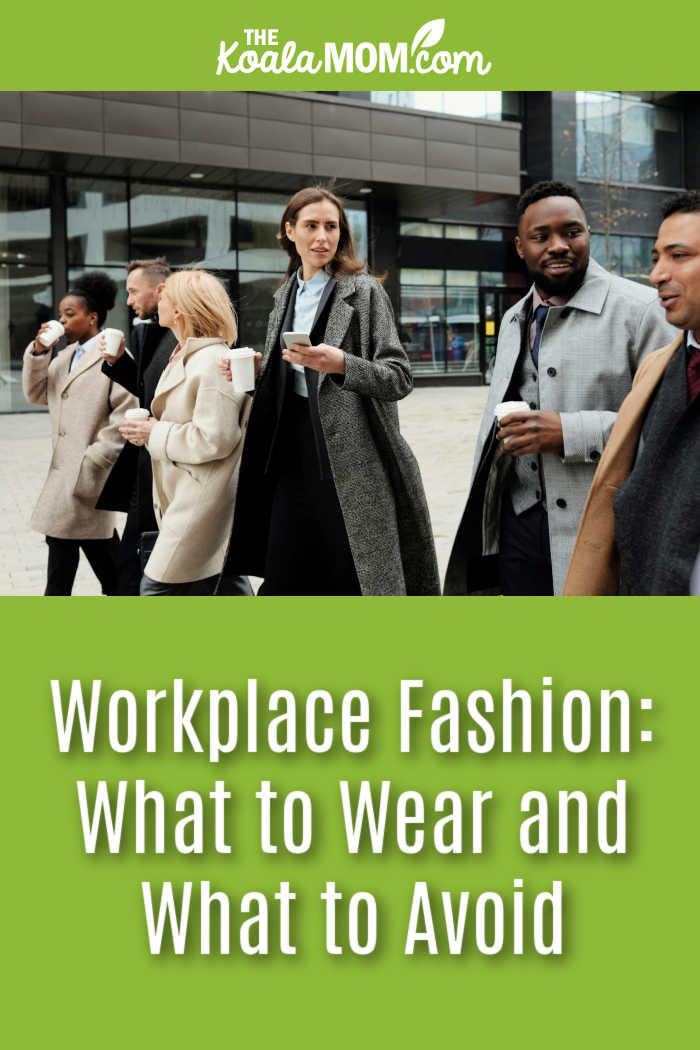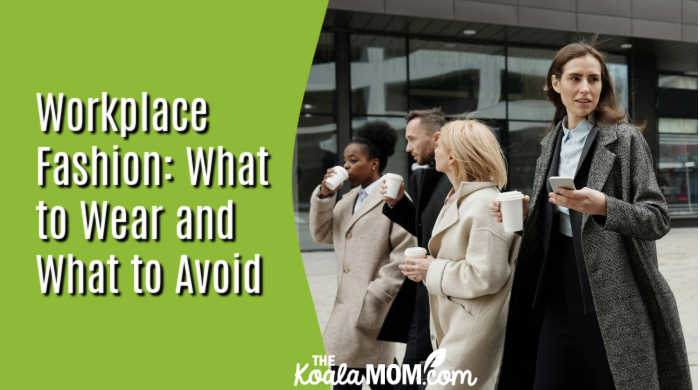In the modern workplace, appearance can play a significant role in the impression you leave on colleagues, clients, and supervisors. While a polished, professional look can boost your confidence, contribute to a positive work environment, and help advance your career, choosing the right attire for the office can sometimes be tricky. Workplace fashion isn’t just about looking good—it’s about dressing appropriately for the environment, ensuring comfort, and remaining true to your style.
In this post, we’ll explore the essentials of workplace fashion—what to wear and what to avoid—so you can navigate your wardrobe choices with confidence.

If you’re returning to the workplace after several years as a stay-at-home mom, the question of what to wear can be daunting. The clothes you wore before kids may no longer fit or you may have changed careers since then. Even the idea of getting a new wardrobe for your new job can seem daunting. Try to observe what your co-workers are wearing to get an idea about dress code. If in doubt, as your supervisor for some tips or if there is an official dress code. If you do need to buy new items, try to find clothing that will mix-and-match easily or create a capsule wardrobe.
What to Wear: Dressing for Success
Dressing appropriately for work is essential for making a strong impression and feeling confident in your role. The right attire depends on the workplace environment, whether it’s a corporate office, a creative space, or a medical setting.
In traditional office environments, business professional attire—such as tailored suits, dress shirts, and polished shoes—ensures a refined look. Business casual settings allow more flexibility, with options like chinos, blouses, and smart loafers. In specialized fields, lab wear is a crucial part of workplace fashion.
For healthcare professionals, wearing appropriate attire like lab coats and scrubs for women and men is not only a matter of professionalism but also of hygiene and comfort. Scrubs offer ease of movement, practicality, and a polished appearance suited for a medical setting. Similarly, industries requiring protective gear, such as research labs or manufacturing plants, prioritize function over fashion by incorporating safety wear into everyday work attire.
In more relaxed workplaces like tech startups, a neat and well-groomed appearance still matters, even if jeans and sneakers are allowed. Regardless of the industry, well-maintained clothing that fits properly, is free of wrinkles, and aligns with company standards can help project a competent and professional image, setting the foundation for career success.
What to Avoid: Common Fashion Pitfalls
While there’s plenty of room for personal style in the workplace, there are also a few key fashion mistakes to avoid. One of the biggest errors in workplace fashion is wearing clothing that’s too revealing or casual. For example, low-cut tops, shorts, or flip-flops may be appropriate for a beach day, but they aren’t ideal for an office environment. Even in business casual workplaces, it’s crucial to avoid outfits that show too much skin or are overly casual. Skirts and dresses should be of an appropriate length, and tops should have a modest neckline.
Another common fashion pitfall is overly loud or distracting clothing. Flashy, bold patterns or bright colors can sometimes clash with the tone of the office, especially if you’re working in a professional setting. While there’s room for fun patterns and accessories, it’s best to keep them subtle and in balance with more neutral pieces. For instance, pairing a bold printed shirt with a neutral-colored blazer can create a balanced look that still stands out without overwhelming the outfit.
One more thing to avoid is clothing that’s too casual, worn out, or unkempt. Torn jeans, stained shirts, and wrinkled clothing make a negative statement, regardless of your company’s dress code. Maintaining your clothes, ensuring they’re clean and wrinkle-free, and making sure they fit well are essential for presenting a professional image. It’s better to have a minimalist wardrobe of high-quality, well-maintained clothes than to have a closet full of items that are outdated or damaged.
Footwear: the Finishing Touch
The shoes you wear to work can make or break an outfit. In professional environments, closed-toe shoes are often expected, and both men and women should aim for shoes that are polished and in good condition. For men, dress shoes like loafers, Oxfords, or brogues work well with suits or dress pants. Women can opt for heels, flats, or professional boots, but it’s important to choose footwear that is comfortable and appropriate for the workday. Avoid shoes that are too casual or overly trendy, such as flip-flops or sneakers, unless your workplace specifically permits them.
In more casual or creative settings, there’s often more flexibility in footwear choices. Sneakers may be allowed, but it’s still important to ensure they’re clean and in good condition. Avoid overly flashy or athletic styles, and choose shoes that complement the rest of your outfit. Even if your office allows sneakers, remember that they should still look professional and polished.

The way you dress for work says a lot about your professionalism, attitude, and respect for the workplace culture. While it’s important to dress appropriately for your specific office environment, the key to workplace fashion is confidence. When you feel comfortable in what you’re wearing, you’ll project confidence and professionalism, which can have a positive impact on your career.
By following these guidelines for what to wear and what to avoid, you’ll be able to build a wardrobe that reflects your style while maintaining a polished, professional appearance that aligns with the expectations of your workplace.

No Responses Yet